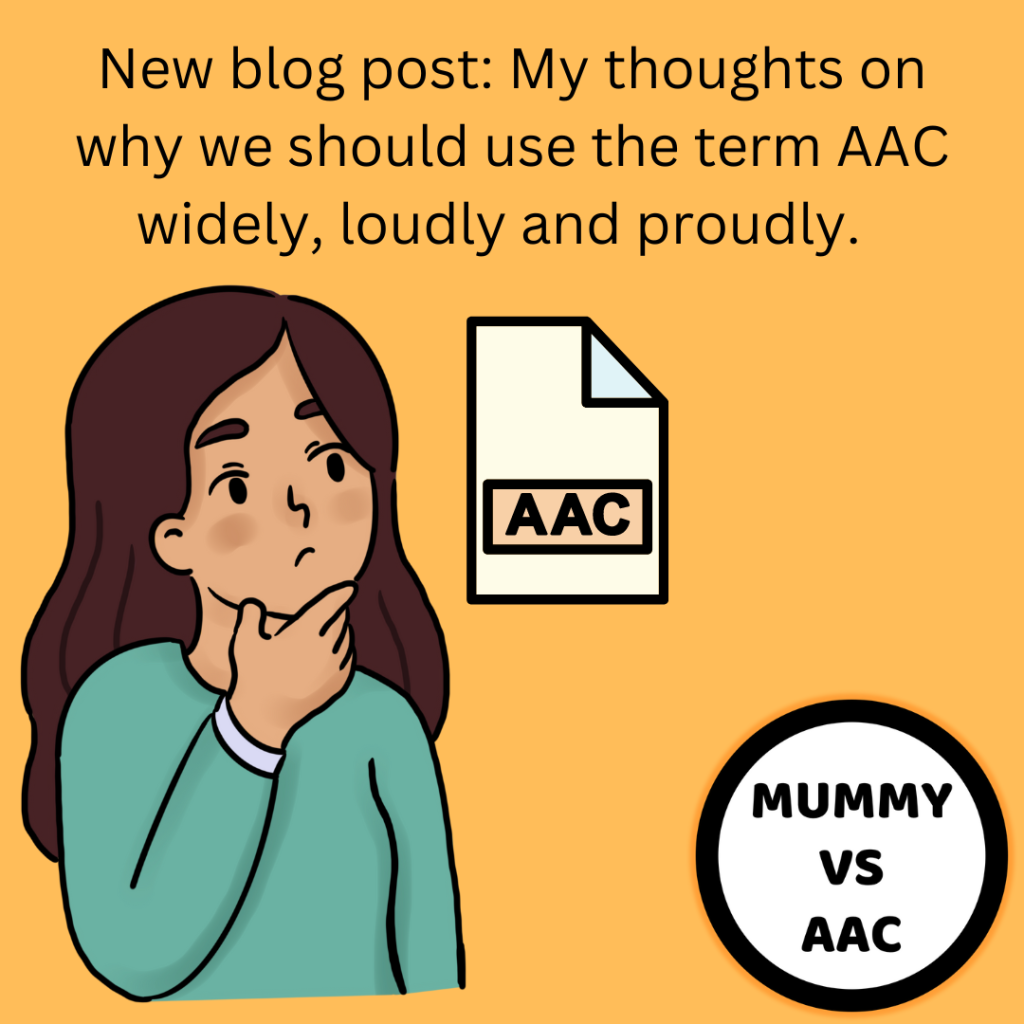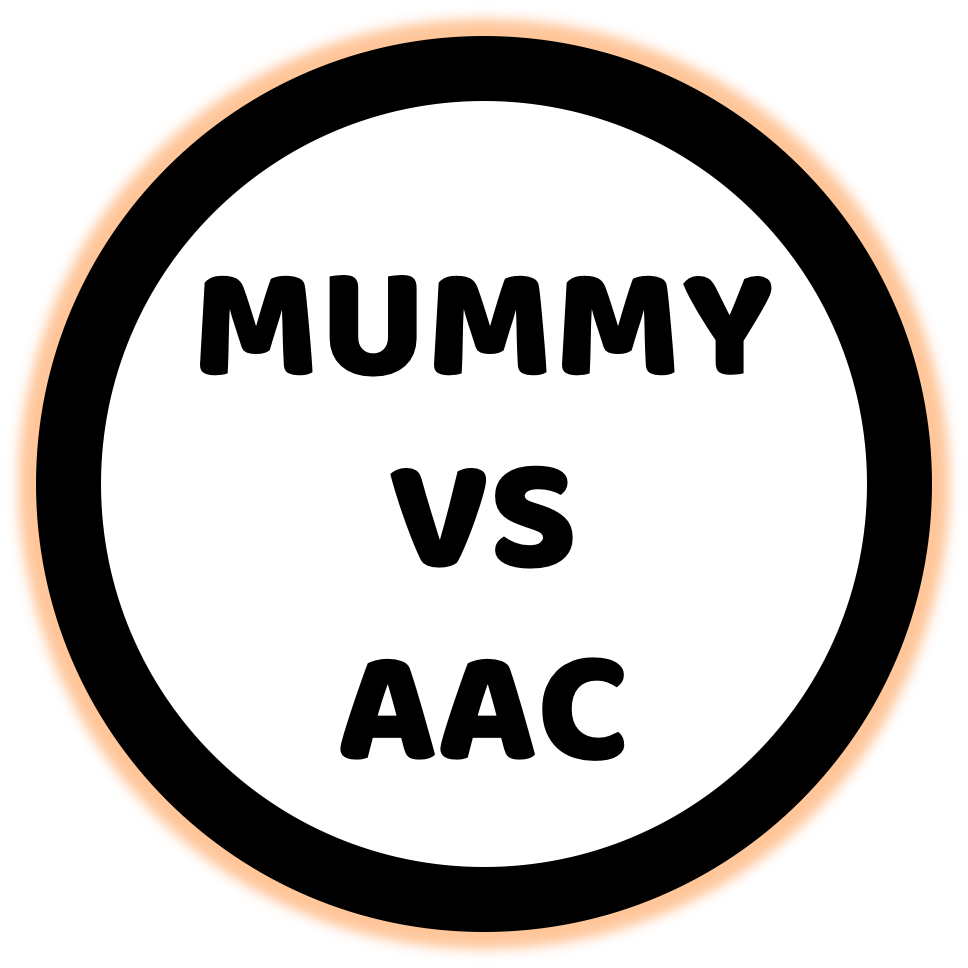
I’ve met a couple of school age parents this week that didn’t know the term AAC even though their kids have been accessing AAC support in school. If you need it here is a short definition of AAC .
I’ve been reflecting this week on how families can learn about and build a community around AAC when they don’t know what to look for. Is there a reluctance to use the term AAC? If so, I wonder why?
1. It’s a complicated acronym?
Agreed, acronyms aren’t ideal. I think, though, it’s safe to say that if you use an acronym with the parents of a child with SEND who has an EHCP gets DLA and food through a PEG we’ll manage to learn what it means. Of course using them without an explanation isn’t helpful but I believe allowing families to learn the terms they need to seek out good information can only help. In a recent survey of AAC users the only acronym they were happy to use was in fact AAC.
2. Perceived readiness to accept the need for AAC?
I don’t know if there is any research out there but I wonder if we’re being a bit over cautious in not using the term. Who in fact does this protect? I’m a firm believer that families need information about what is available. We also need this in a format that allows us to find information. I worry that using looser terms like ‘visual support’ don’t give parents the words they need to go and gather good information for themselves. I did a google search today (6th March 2023) to see what came up when I searched ‘ visual support for children with disabilities’. The first link was google scholar hits, not too friendly, then after that there were a massive range of sources, many pertaining specifically to autism. When I searched ‘AAC for children with disabilities’ the first hit was the ACE Centre website, followed soon after by the ASHA definition and then the Communication Matters Website. All reliable sources and in my opinion much more useful for parents trying to learn their way. I think the readiness of families to access AAC support shouldn’t hamper us in giving them the information they need to get that support if and when they are ready. To take an example from my own life, I had information about what a PEG (Percutaneous Endoscopic Gastrostomy) was and the procedure for it long before we were ready for that support for nutrition.
3. Ableism or stigma?
Survey research has shown that people who use AAC like the term AAC (Hilary-Zisk and Konyn, 2022). By not giving this language we are not following the lead of AAC users who advocate for it. Ideally maybe we wouldn’t want to define a community using an acronym that is what we have though. Disabled people choose to own this vocabulary and I worry that by not using the words we increase the stigma?
4. Rarity?
If your child has disabilities that are not diagnosed or are very rare then finding a strong community who encourage and share the possibilities of AAC can be difficult. I don’t know if I wasn’t an SLT if I would have found out about AAC from anyone. I learned a lot of what I know from looking at support for other diagnoses. Angelman UK and Rett UK are all ways families can connect with a community and these ones in particular have a strong focus on AAC support, but what if you’re not searching for information about these diagnoses?. In this case it is even more important that parents are given the words and tools to find information from organisations that are not diagnosis specific such as 1voice or Communication Matters.
Given my personal experience and what I know about AAC provision in the UK and what AAC users prefer I think that we need to be more open about talking AAC. Unfortunately I don’t think that the way services are designed allow for families to access services on their terms. What journey do I think might look good? From as soon as a child has a diagnosis or experience or development pattern that might suggest communication support will be needed we talk about AAC. We give information and frame it as an opportunity (‘and’ not ‘but’) for example ‘One of the things we know about Emanuel Syndrome is that it can lead to needing support with communication and there are lots of ways you can do that when you’re ready. The term we use to describe these things is AAC, you can read more about that here and explore it when you’re ready.’ Then having services designed so that when parents are ready to seek support with communication then therapists are ready to work in that window. These windows open and close. If we ask for support when a window is open then that’s when we’re ready. It may well be closed by the time we get to see anyone and if we have to prize it open it’s exhausting for everyone if the time isn’t right.
Do I think AAC is an ideal term? Probably not but it is established and has a community around it. Do I think that parents can be overwhelmed with information? Of course. I also think that the ideal services to support parents are not always available or available to all so it’s critical to give parents what they need to find good information for themselves and know what to advocate for.
The research presentation by Alyssa Hilary-Zisk and Lily Konyn is available at AAC in the cloud 2022 on YouTube.

2 Responses
Please read the blogpost,
How to talk about AAC and AAC users (according to them), by Alyssa Hilary-Zisk and Lily Konyn: https://www.assistiveware.com/blog/how-to-talk-about-aac for more detailed information.
Thanks for sharing this link Pam. I really enjoyed their presentation at AAC in the cloud last year.